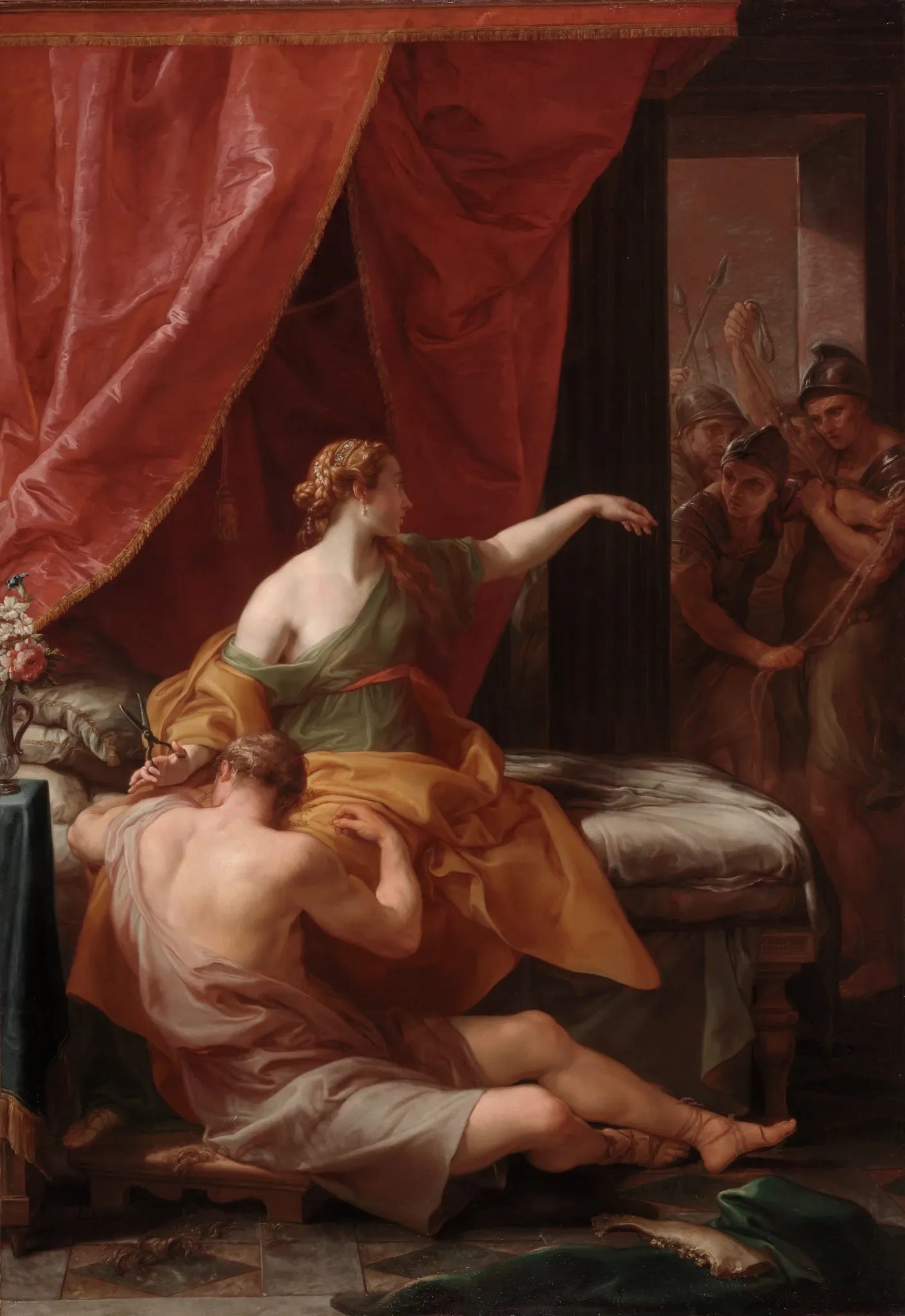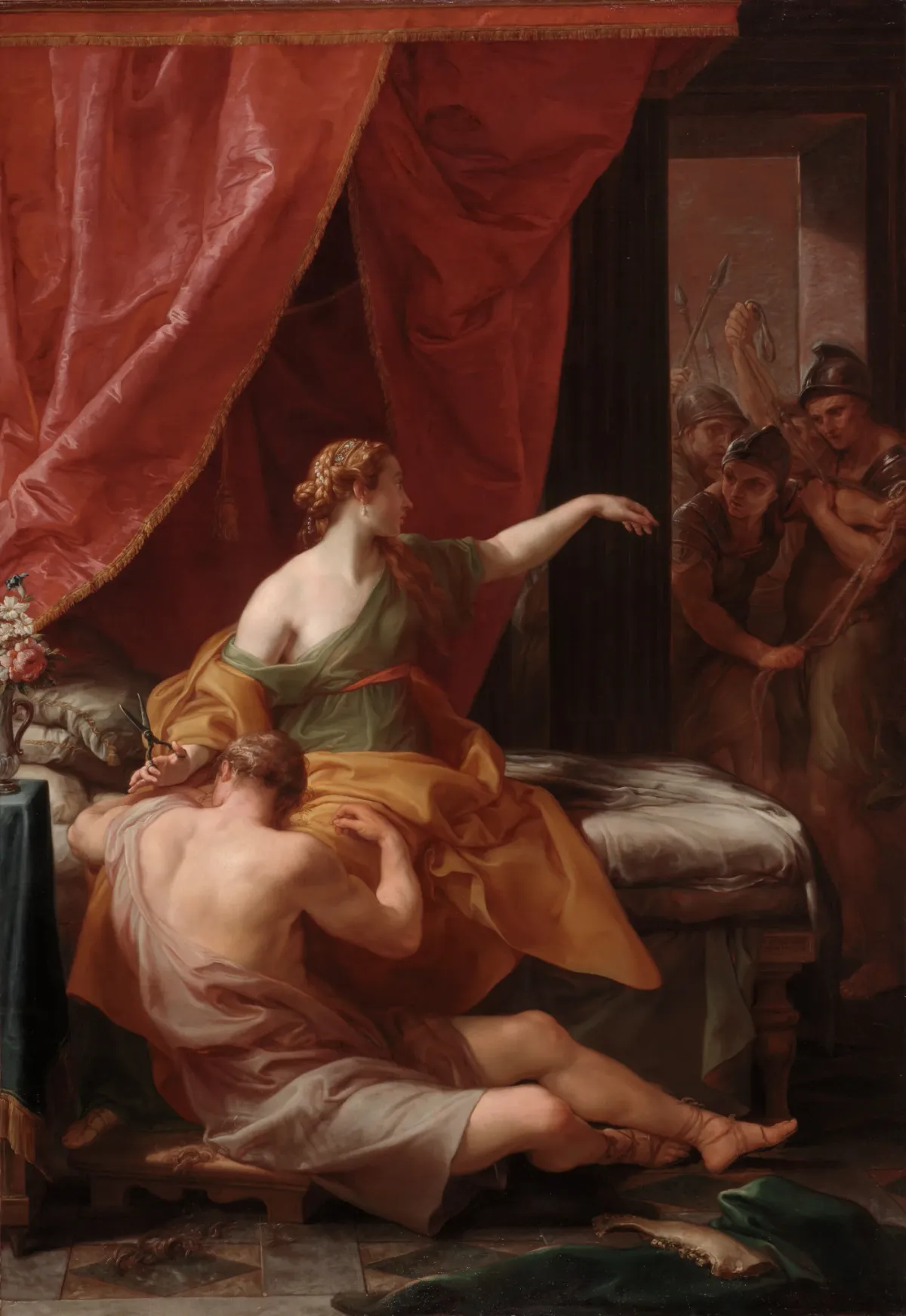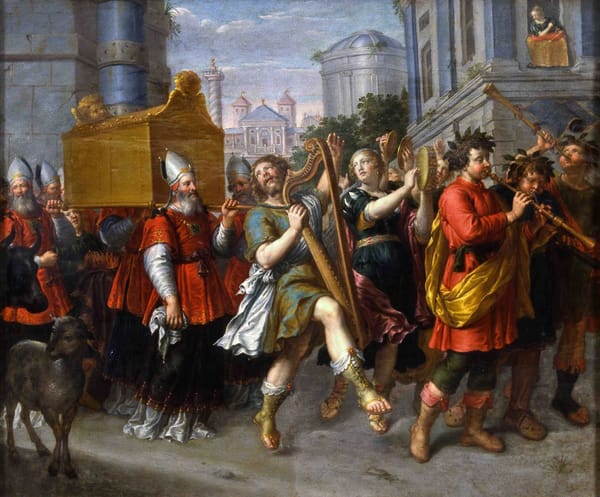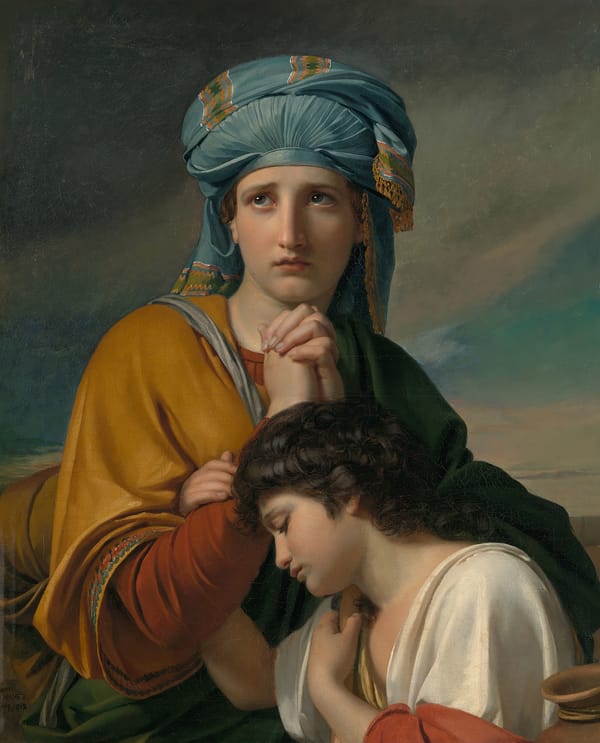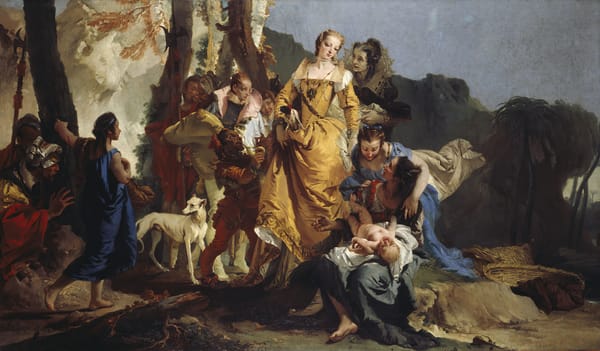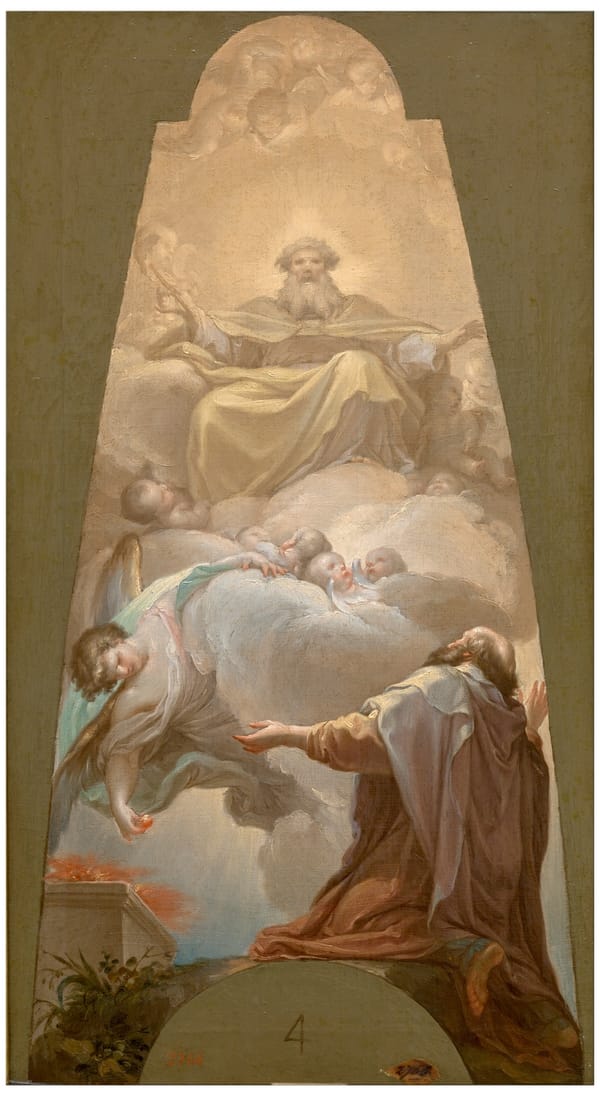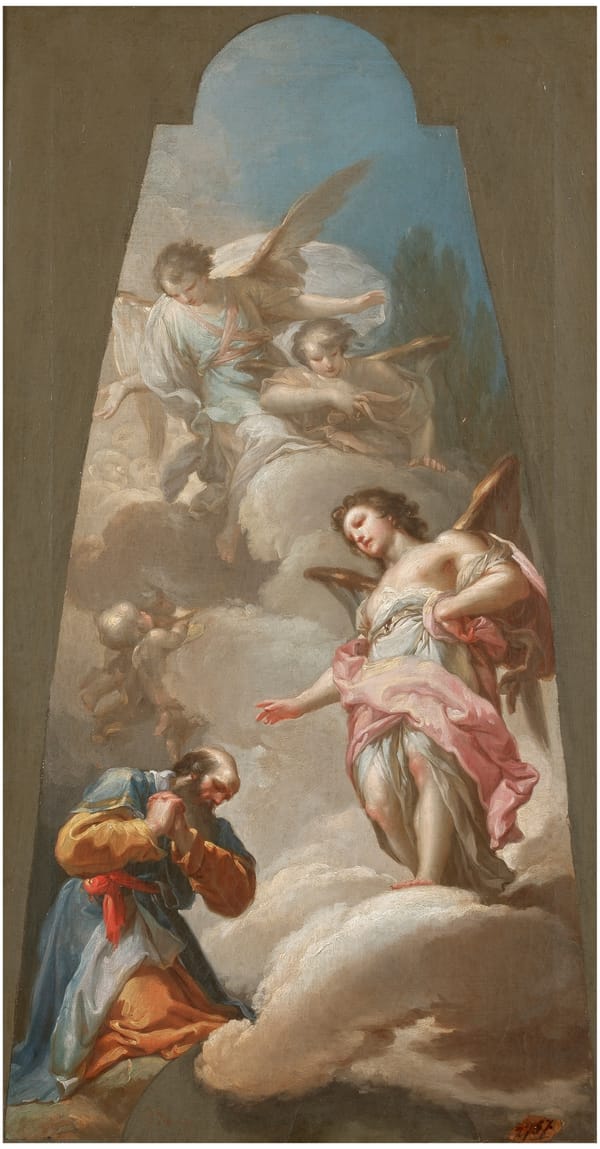About the Image:
By mid-eighteenth century Pompeo Batoni prevailed as the leading portraitist in Rome catering to an elite clientele of wealthy tourists from the British Isles. Decades earlier, he had launched his career painting historical and biblical subjects, and he continued to depict such subjects in a dignified, classicizing style throughout his career. In Samson and Delilah, Batoni depicts the crucial moment of betrayal in the Old Testament tale. Succumbing to the Philistine woman’s flattery and strong drink, Samson breaks his vow and shares the secret of his strength: “A razor has never come upon my head...if I be shaved, then my strength will leave me” (Judg. 16:17) Quickly, Delilah shears his long hair and summons her guard who burst into the chamber to seize him. Delilah remains serene with Samson, now powerless, recumbent at her feet. Both figures appear calm amidst the chaos and are forged in the noble model of ancient statuary. From Bulletin of the Detroit Institute of Arts 89 (2015)
About the Artist:
Pompeo Girolamo Batoni (1708-1787) was an Italian painter who was the leading portrait painter of 18th-century Rome[3]. He was born in Lucca, Italy, the son of a goldsmith, and his training probably took place there[3]. Batoni's style took inspiration and incorporated elements of classical antiquity, French Rococo, Bolognese classicism, and the work of artists such as Nicolas Poussin, Claude Lorrain, and especially Raphael[1]. He is considered a precursor of Neoclassicism[1]. Batoni invented the type of "grand tourist" portrait, which shows the sitter at ease among the ruins of antiquity, and was very popular among the English[4]. Batoni's pre-eminence in this field was unchallenged, and he was particularly favored by foreign visitors making the Grand Tour, whom he often portrayed in an antique setting[2]. Batoni's works are displayed in various galleries, including the National Gallery in London and the National Galleries of Scotland[3][6].
Citations:
[1] https://en.wikipedia.org/wiki/Pompeo_Batoni
[2] https://artuk.org/discover/artists/batoni-pompeo-17081787
[3] https://www.nationalgallery.org.uk/artists/pompeo-girolamo-batoni
[4] https://www.britannica.com/biography/Pompeo-Girolamo-Batoni
[5] https://www.wikiart.org/en/pompeo-batoni
[6] https://www.nationalgalleries.org/art-and-artists/artists/pompeo-girolamo-batoni
